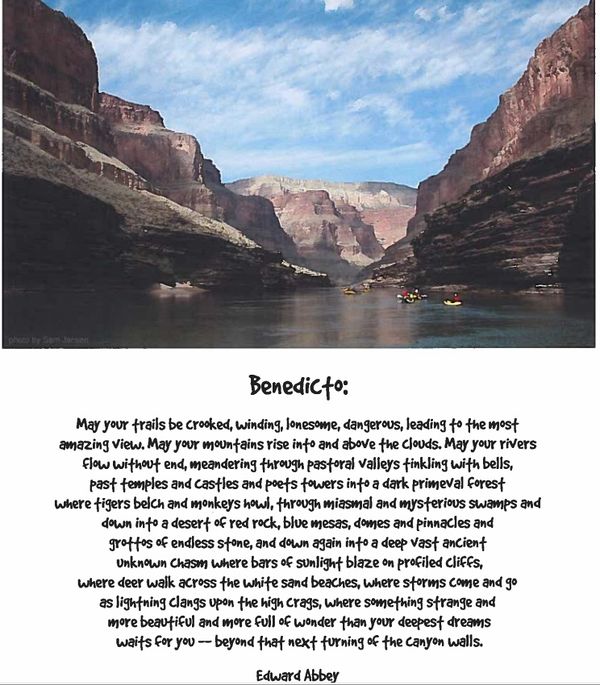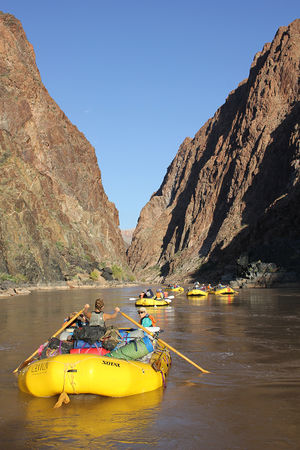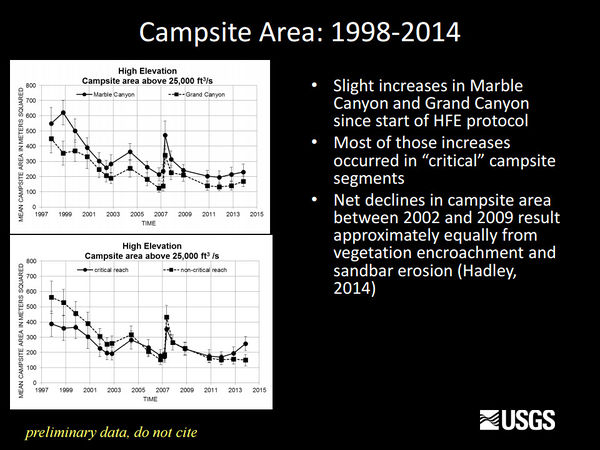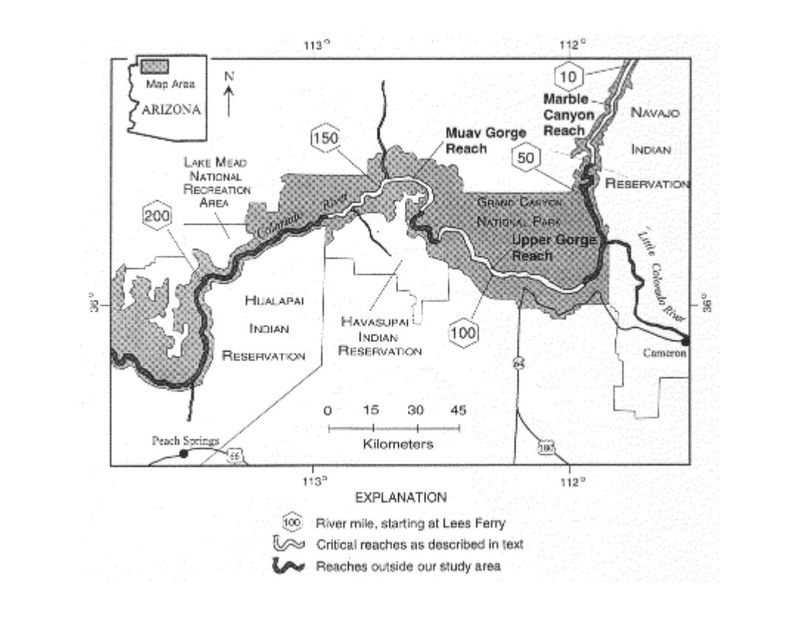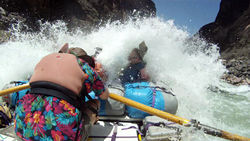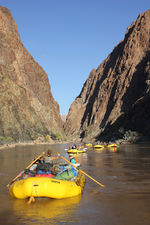|
Colorado River Recreation
Sandbars have been used as campsites by river runners and hikers since the first expeditions to the region more than 100 years ago. Because the Colorado River is dominated by bedrock cliffs and steep talus slopes, sandbars provide unique areas along the river that are flat, relatively free of vegetation, easily accessible by river runners, and able to withstand high usage with negligible impact. These campsites continue to be an important part of the recreational experience for the more than 25,000 hikers and river runners that visit the Colorado River corridor each year. [1]
Maintain and improve the quality of recreational
experiences for the users of the Colorado River Ecosystem. Recreation
includes, but is not limited to, flatwater and whitewater boating, river corridor
camping, and angling in Glen Canyon.
River Recreation in Grand Canyon National Park
• Stewardship worthy of the Grand Canyon so that it can be passed from generation to generation in as natural condition as possible.
• Provide maximum opportunity to experience the wilderness character of the canyon.
• Wilderness experiences and benefits available in the canyon include solitude, connection to nature, personal contemplation, joy, excitement, the natural sounds and quiet of the desert and river, and extended time periods in a unique environment outside the trappings of civilization.
• A river corridor landscape that matches natural conditions as closely as possible, including extensive beaches and abundant driftwood.
• A river corridor ecosystem that matches the natural conditions as closely as possible, including a biotic community dominated in most instances by native species.
• A dynamic river ecosystem characterized by ecological patterns and processes within their range of natural variability.
• Numerous campable sand bars distributed throughout the canyon.
• Recreational and wilderness experiences minimally affected by research and management activities.
• River flows that continue to be within a range that is reasonably safe, given the inherent risks involved in river recreation.
River Recreation in Glen Canyon National Recreation Area
• A quality recreation experience in Glen Canyon.
• Camping beaches suitable for recreational use.
• A setting and ecosystem that is as close to natural conditions as possible.
• Quality river running and angling recreation opportunities.
Blue Ribbon Trout Fishery in Glen Canyon National Recreation Area
• A high-quality sustainable recreational trout fishery in the river corridor in GCNRA, while minimizing emigration of non-native fishes.
• Operate Glen Canyon Dam to achieve the greatest benefit to the trout fishery in GCNRA without causing excessive detriment to other resources.
River Corridor Stewardship
• Management of Glen Canyon Dam that is significantly driven by concern for the cultural values and ecological integrity of the river corridor through the Grand Canyon, with preservation and protection considered over the long term (multiple generations).
• A well-informed public, confident that high quality scientific information is being used for best stewardship practices in the CRE.
The Recreation DFCs are meant to describe goals and objectives for human use of the Colorado River Ecosystem (CRE) through GCNRA and the GCNP. They are intended to include not only traditional recreational activities such as whitewater rafting, camping, and fishing, but also such things as educational activities, spiritual engagement, and other appropriate activities and values. Grand Canyon and Glen Canyon offer many ways for people to experience, appreciate, and learn from them, even to those who never visit in person.
|
